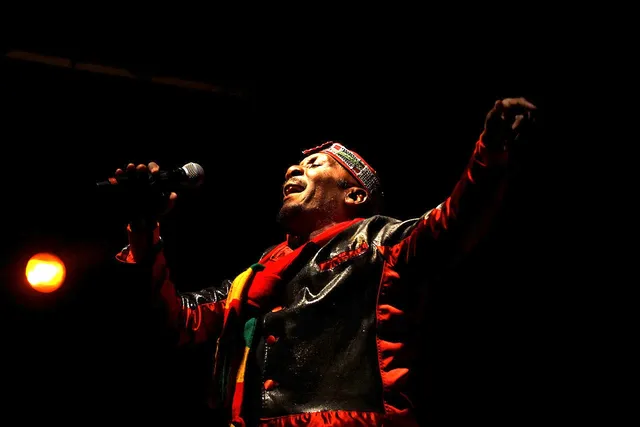The Neo-Romantic Rebellion Against AI
Explore the rise of Neo-Romanticism, a cultural movement reacting against the increasing dominance of AI and automation. This movement emphasizes emotion, context, and sensory experience as counterpoints to the dehumanizing effects of technology.
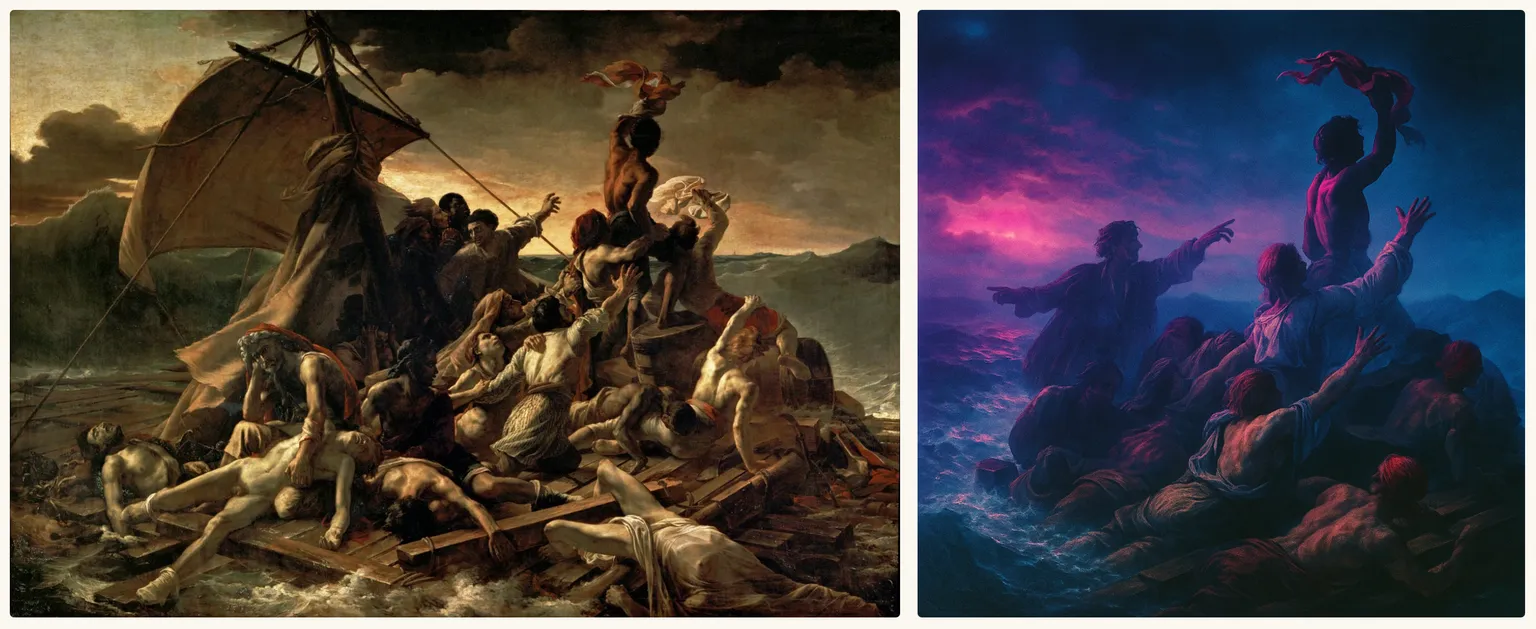
The Mood Economy
Quick Note: This article plays better with the volume on. Here's the soundtrack while you read.
Every system eventually gets too close to its own amplifier. What starts as signal turns into noise, and what starts as clarity becomes a hum you can feel in your teeth. That is where culture is right now, standing in front of the speaker and riding the edge between resonance and feedback.
Markets are no longer reacting to data. They are reacting to emotion. Inflation moves on mood. Stocks trade on memes. Politics now feels more like a band warming up than a government tuning policy. The world has learned that if you want attention, you do not need to play louder. You only need to make the crowd feel something, even if it is dissonance.
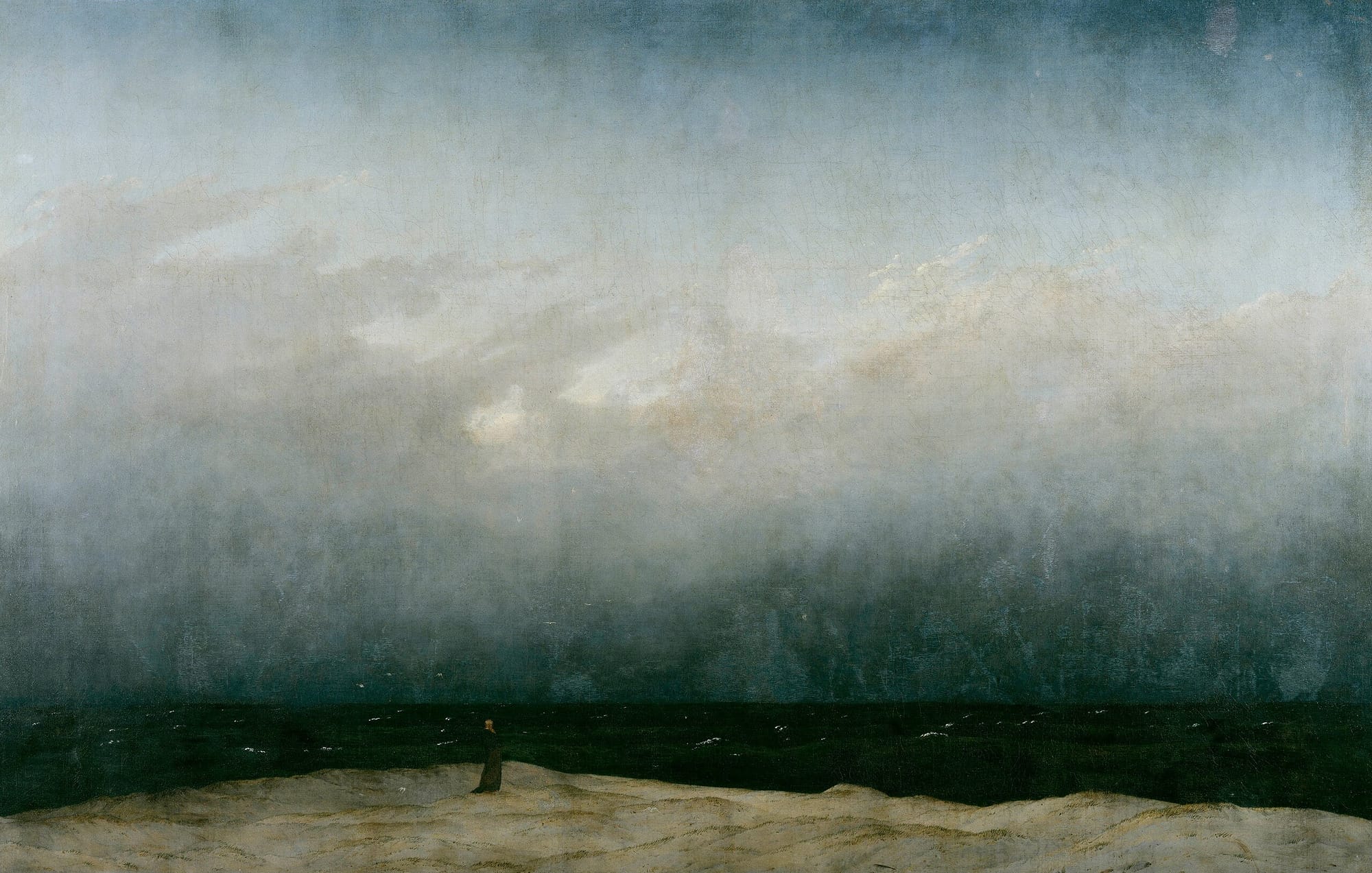

Monk by the Sea (1808–1810) by Caspar David Friedrich | Original Masterpiece & Envisioned 1980's New Romantic album cover by AI Slop.
Advertising has gone back to the mood board because emotion has become the new infrastructure of economics. It is not just about campaigns. It is about the deregulating of collective feeling. A leader cancels trade talks out of outrage. A marketer preaches empathy as the new metric as if it can be measured. A video game becomes the most honest social network left because it still knows how to build connection through play.
In the age of data analytics, emotion was treated as the hum that could be tuned off with a noise gate pedal, something no longer needed and filtered out. Now the hum is coming through the gate. The economy measures pulse as much as it does confidence. Some brands have stopped trying to predict how people will think and started tracking how they feel in real time.
This is the new commercial literacy: reading volatility as mood swings, not market trends. The numbers still matter, but they have started to behave like weather: unpredictable, sensitive, irrationally human. The trick is not to control the storm. It is to stand close enough to register the low pressure points without getting swallowed by it.
Design Learns to Breathe
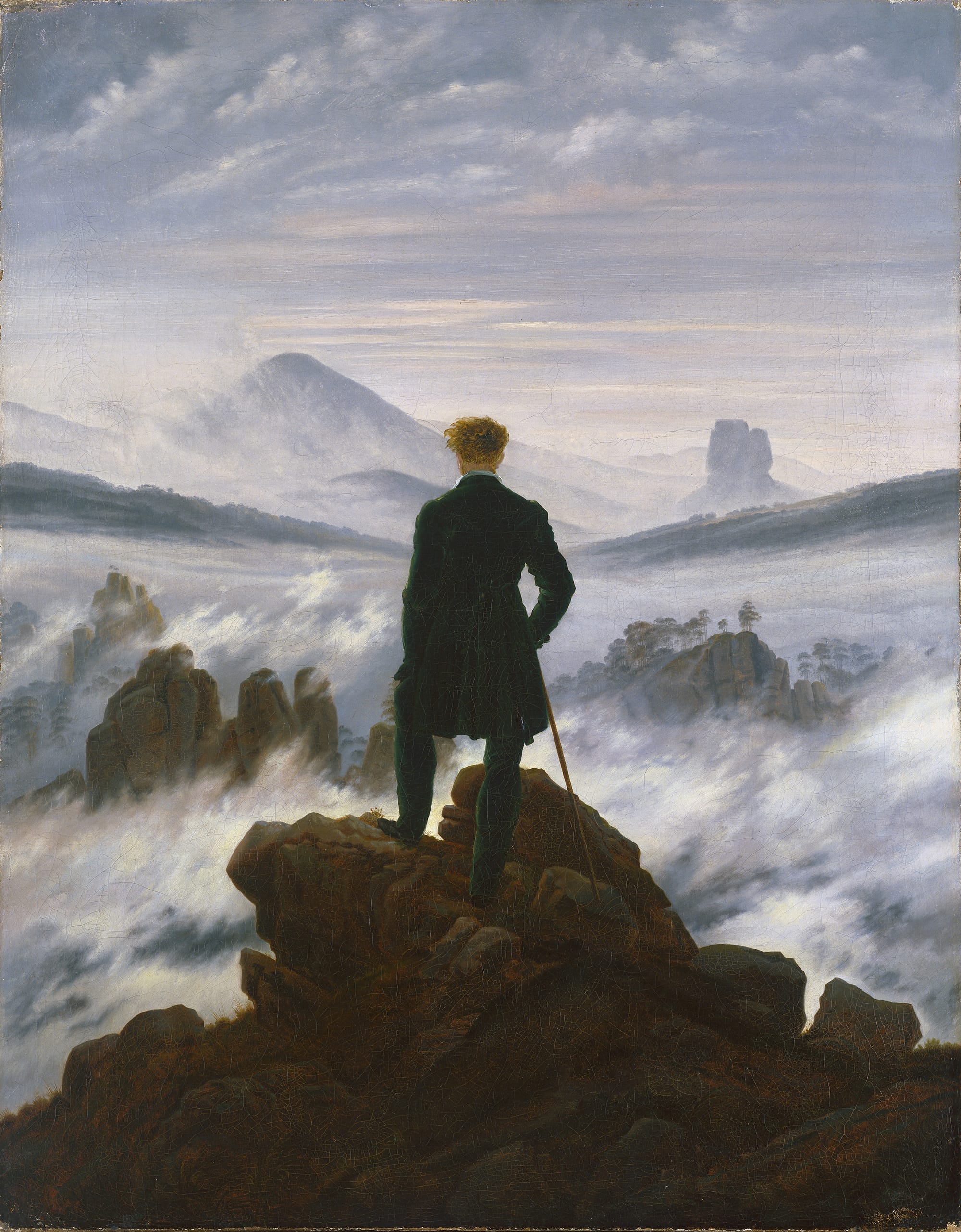

Wanderer above the Sea of Fog (1818) by Caspar David Friedrich | Original Masterpiece & Envisioned 1980's New Romantic album cover by AI Slop.
Design used to race the algorithm. Now it is learning how to catch its breath. After a decade of chasing frictionless experiences and pixel-perfect grids, the new signal of sophistication is a pause.
Studios that once competed on velocity are rediscovering texture, time, and touch. A café in Tokyo turns matcha into a meditation on calm. A print shop treats paper like memory foam for the senses. A type foundry sells fonts the way galleries sell sculpture. What they share is not nostalgia for the past, but the refusal to let design be defined by automation.
Speed made design scalable, but it also made it forgettable. A scrollable sameness crept in, flattening difference until everything looked like everything else. Now the counter-move is patience. Designers are bringing friction back into the process. A bit of human irregularity. A tactile edge that says someone was here.
This is a recalibration and not a retreat from technology. It’s a rebalance. The craft is in knowing when to open the release valve so the process can breathe. The future of design will not be written in code or canvas alone. It will live in the rhythm between the two, in the way a surface, a letter, or a sip can remind us what it feels like to have time again.
Design’s next revolution is not digital. It is deliberate.
Culture in Feedback Mode
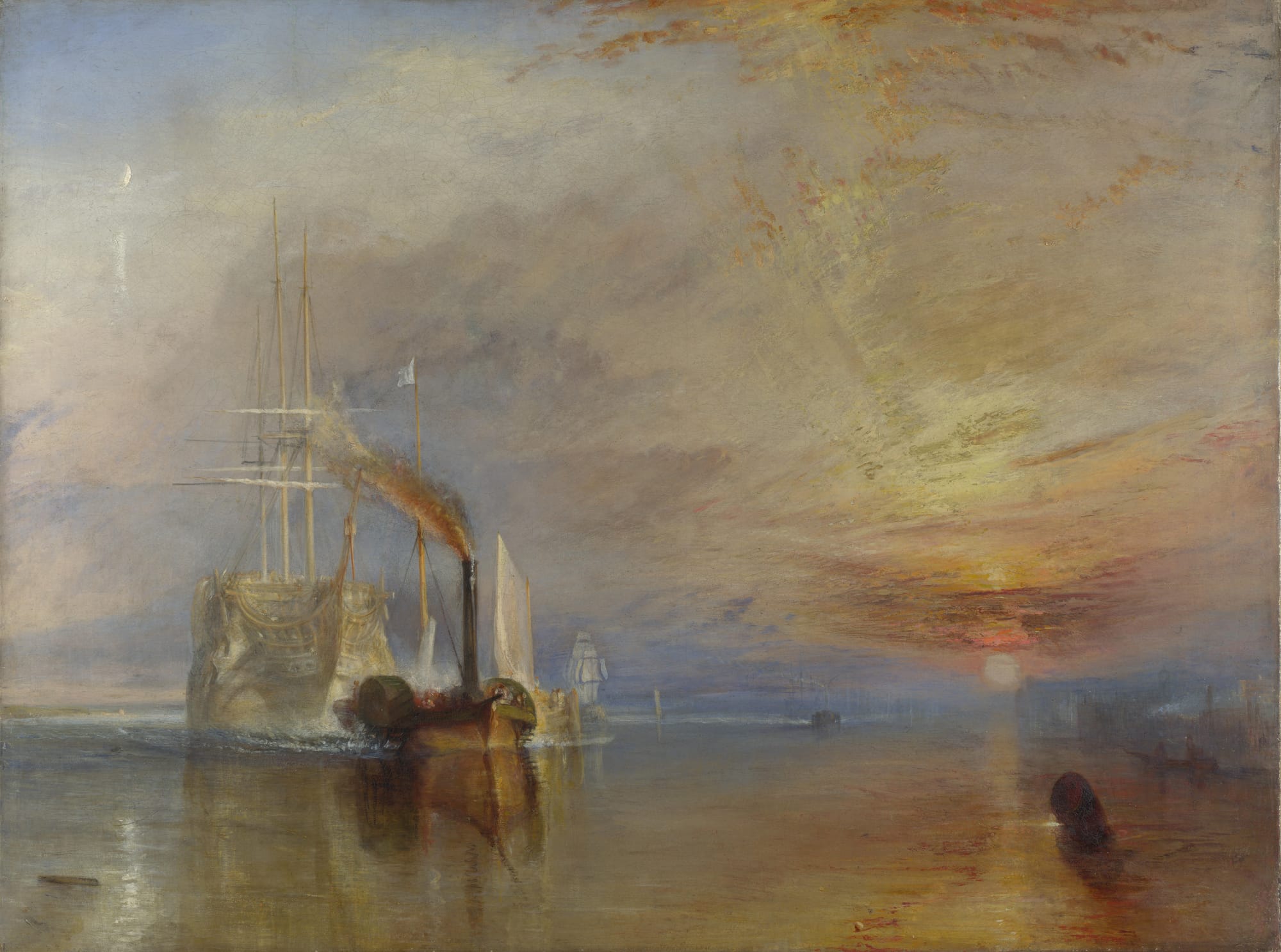
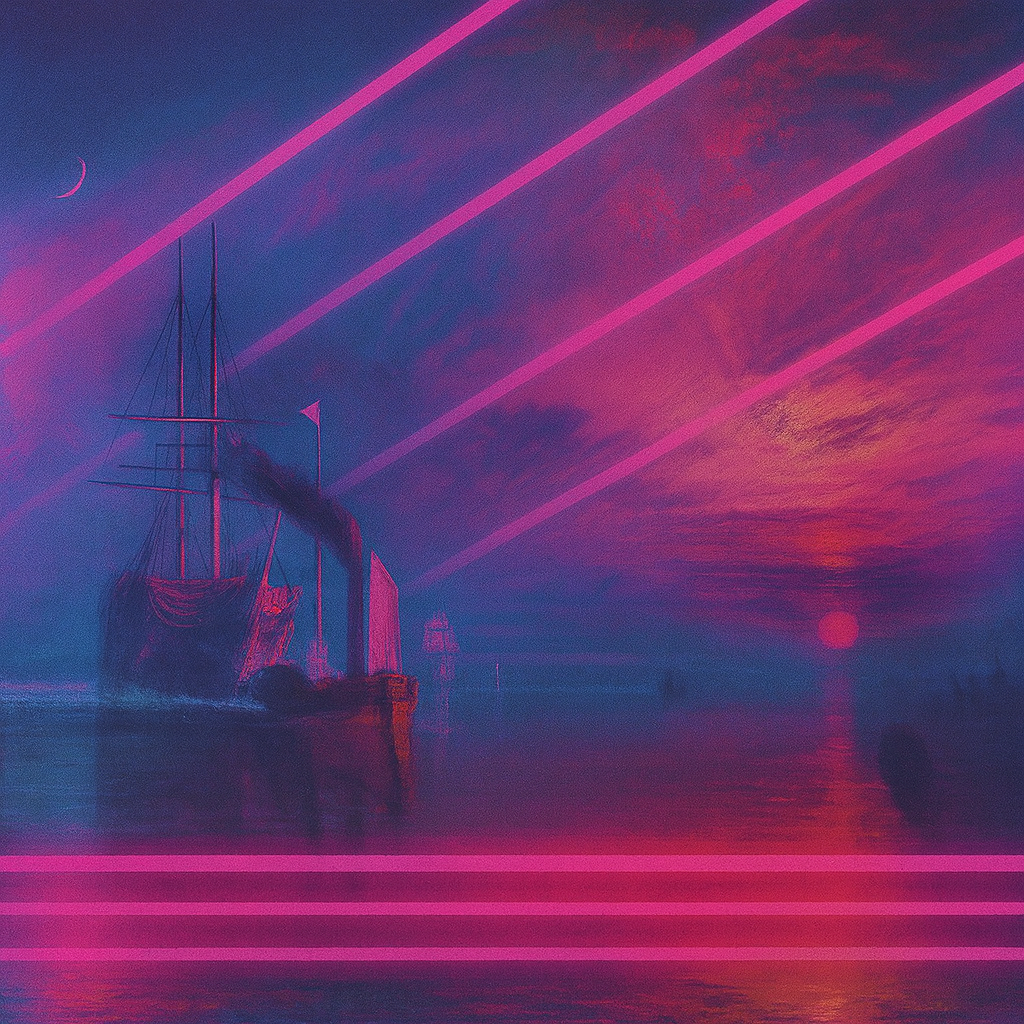
The Fighting Temeraire (1839) by J. M. W. Turner | Original Masterpiece & Envisioned 1980's New Romantic album cover by AI Slop.
Culture used to run on shock surprise in order to cut through the mix of a highly fragmented world. Over time the frequency of the surprises has lost their shock value, and has settled into running loops. Every song, show, and meme is calibrated by the same machine that watches what we watch. The feedback is instant, addictive, and rarely neutral.
The algorithm has replaced the audience. Artists test their work the way scientists test hypotheses, watching for micro-reactions that decide whether something lives or dies. A singer posts seven versions of the same chorus until one catches. A studio greenlights a series because the trailer already trends. The crowd no longer cheers from the seats. It writes the script.
Pop culture has become a feedback instrument. Every riff, joke, and reference comes pre-measured for resonance. The result is a creative industry that behaves like a sound engineer, constantly tuning the mix to avoid silence. Natural discovery has been traded for consistency. The PA loud speakers have been replaced by the comfortably numb isolation of noise cancelling headphones.
But feedback is not creation. It is a reflection. The more culture listens to itself, the smaller its range becomes. The thrill of discovery fades into the hum of narrow validation. Artists who once broke systems now optimize for them. Platforms that once hosted experimentation now engineer boring predictability.
Still, there is music in the noise. The best creators are learning to play with the feedback instead of fearing and fighting it. They lean into distortion, bend the algorithm, and turn repetition into rhythm. Culture may be caught in a reflection loop, but the right hands can still make it sing.
An Espresso Test for Intelligence
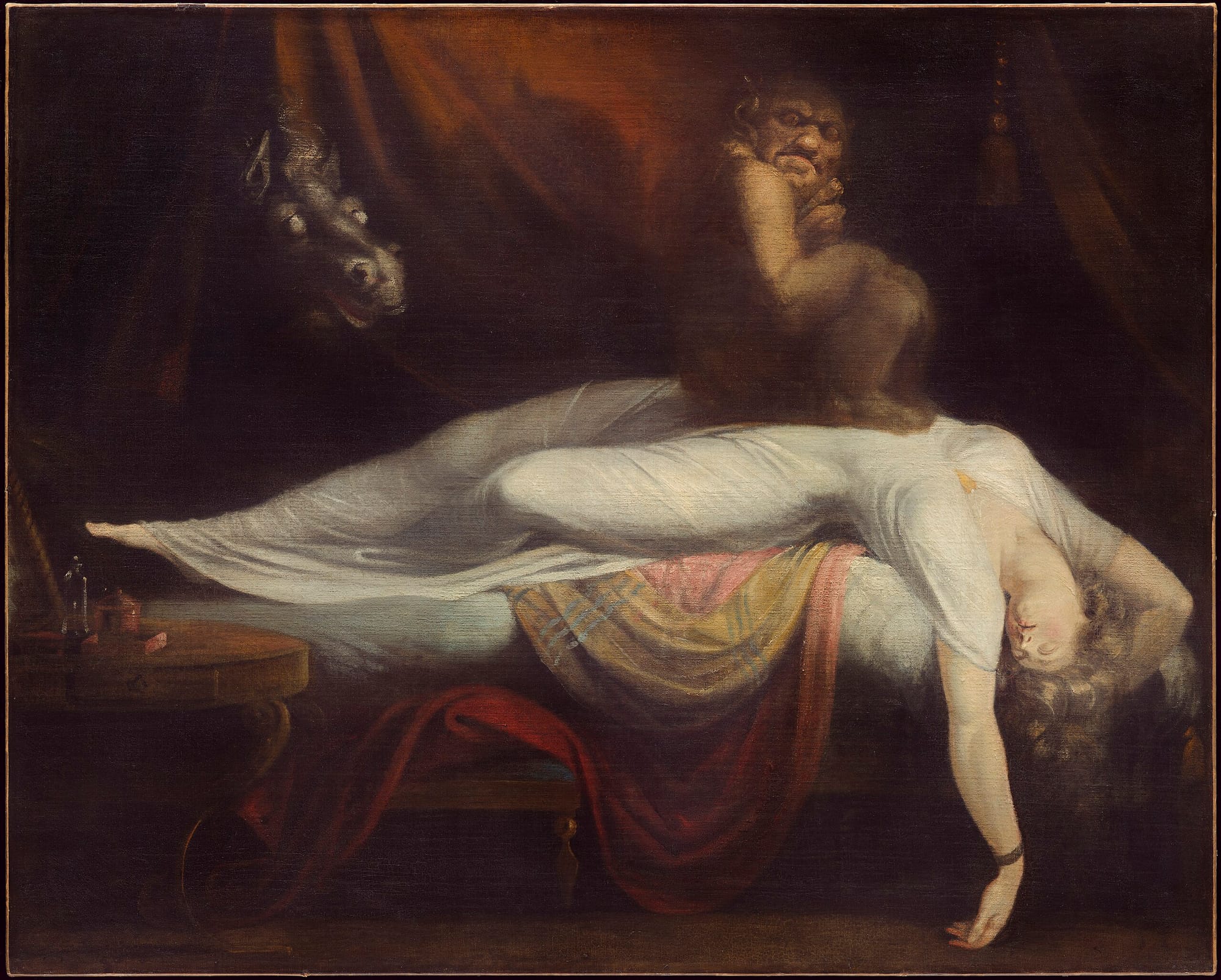
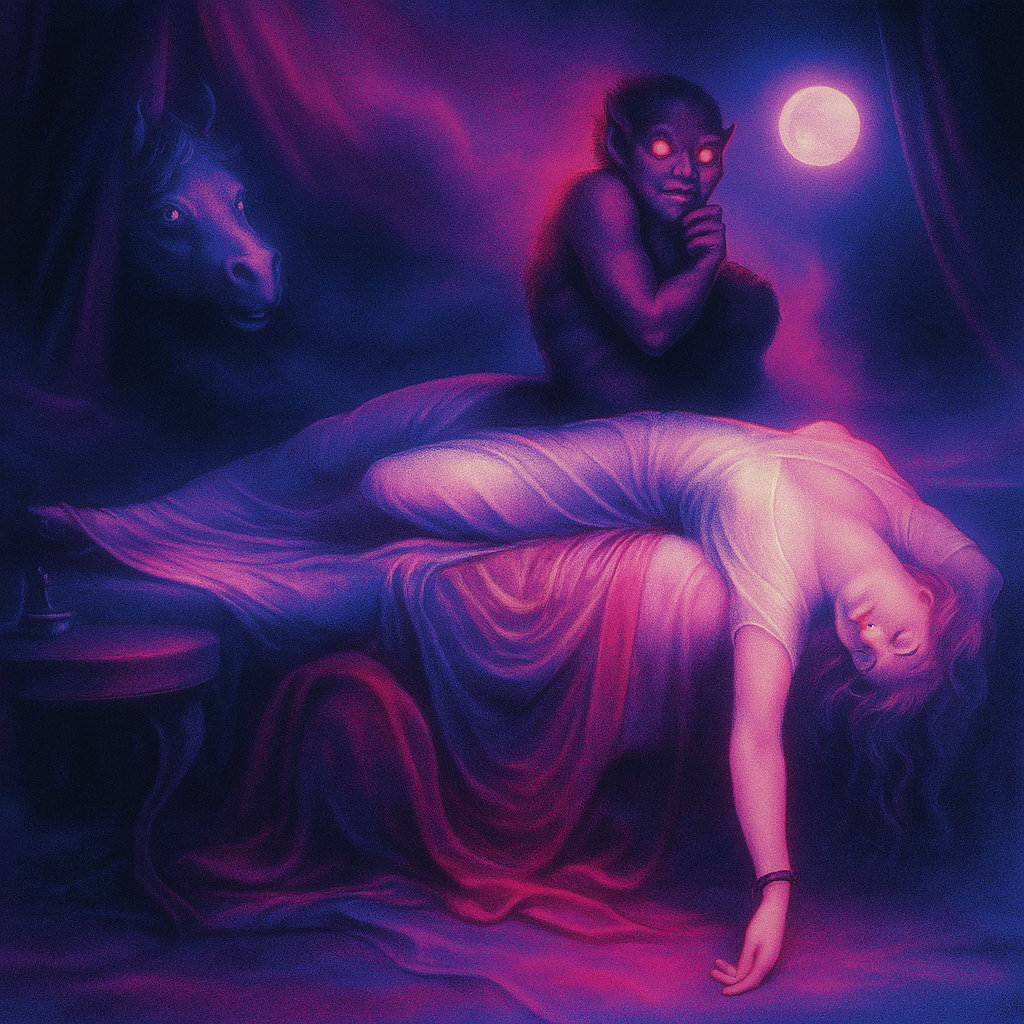
The Nightmare (1781) by Henry Fuseli | Original Masterpiece & Envisioned 1980's New Romantic album cover by AI Slop.
AI no longer needs to pass the Turing Test. It needs to pass the espresso test. The real question isn’t whether a machine can think like us, but whether the people building it will allow other humans to think.
As companies automate creativity, the line between augmentation and replacement is being quietly erased. A game engine designs its own world in real time. A model rewrites ad copy before a human even briefs it. The press release says “partner,” but the subtext says “we found a cheaper artist.” The creative act is being reorganized into a system where human judgment is optional.
To make up for that loss, the same companies are staging gestures of humanity. Coffee shops with free cappuccinos. Branded community spaces where the stack pretends to have a soul. These are not revelations in trust. They are corporate confessions slow dripping as hospitality. Silicon Valley is trying to sell warmth after decades of selling surveillance. The smell of espresso is the new scent of plausible empathy.
Opening a coffee shop is symbolically intellectual, but how long before the machines are AI programmed and licensed out to Starbucks to solve an inconvenient barista staff situation over workers rights?
Behind this pro-active bad image PR containment play, a quieter rebellion is forming among scientists and thinkers. They have realized that “intelligence” can no longer belong to computation alone. It must be redefined as something relational. As a living system that understands itself through connection, not code. Meaning isn’t measured in speed or scale anymore. It lives in context, in care, in the ability to matter to another being.
“I think, therefore I am” is repositioned as “I think and sense, therefore I am.”
The machine will keep learning, once it has access to quantum processing, it will be faster than we can follow. But the real test of intelligence now belongs to us. Not whether we can build systems that think, but whether we can remain the kind of species who still invests in the uniquely human trait of finding new ways to think for ourselves.
Final Prediction
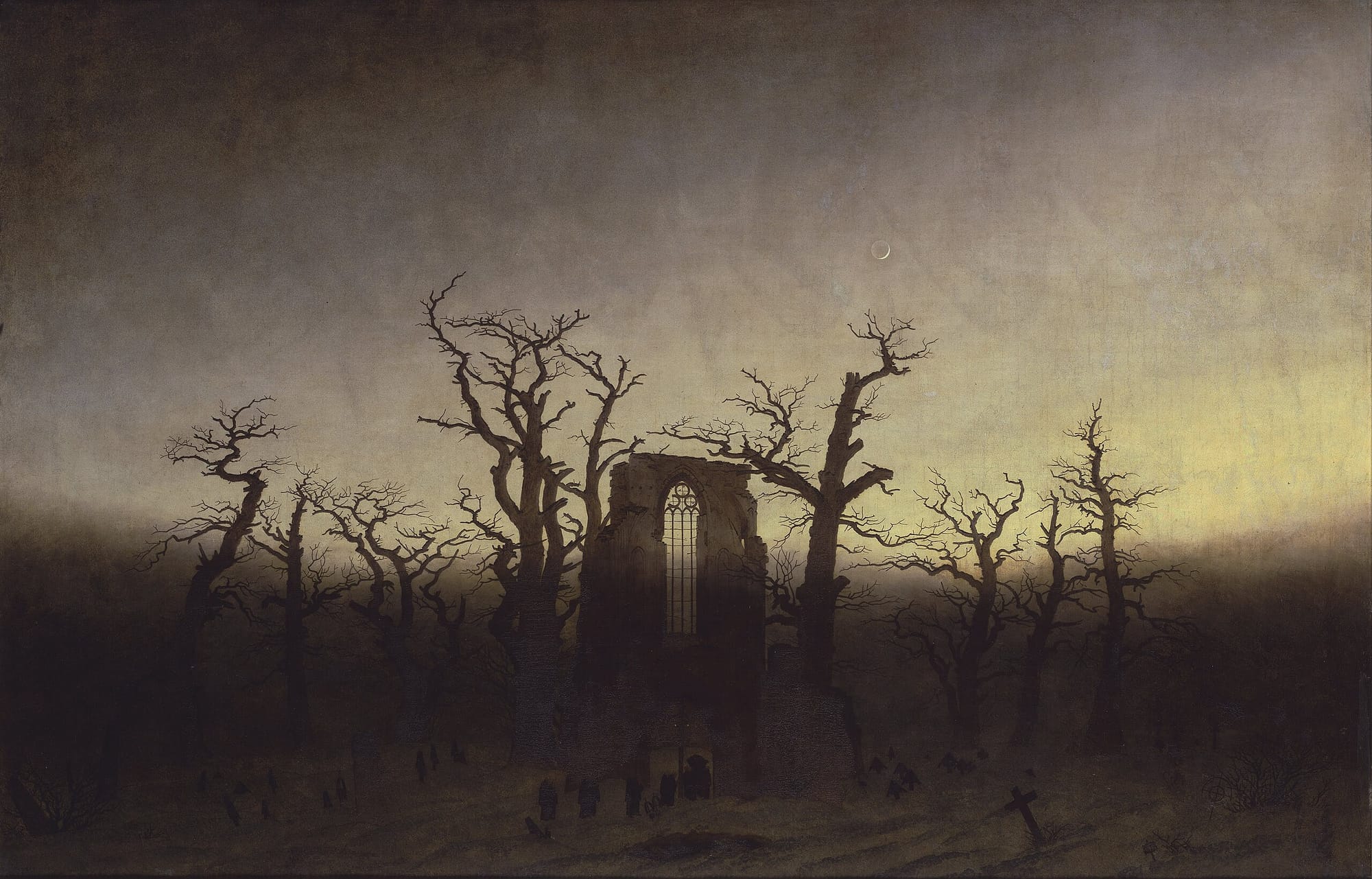
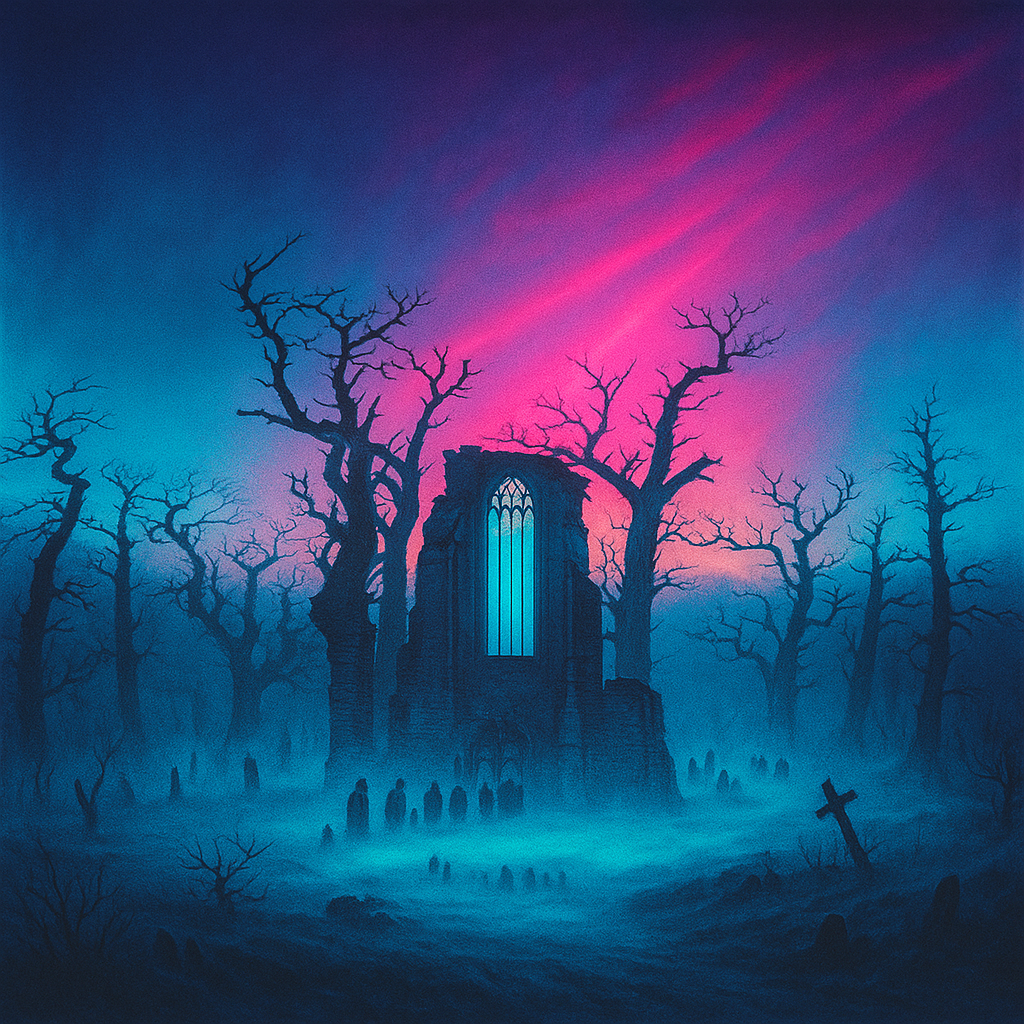
The Abbey in the Oakwood (1808–1810) by Caspar David Friedrich | Original Masterpiece & Envisioned 1980's New Romantic album cover by AI Slop.
Every wave of technology begins as a systematic liberation that stirs a reflective rebellion. The Industrial Revolution brought on the reflective rebellion of the Romantic period. As people worked mind-numbing, repetitive tasks inside factories, thinkers like Edmund Burke began to look outward and rediscover the sublime.
An unusual retaliation, perhaps. But it makes sense in terms of cause and effect. Outward threats with uncontrollable momentum often force us to question ourselves and look deep inside.
We have a knack for building systems to extend ourselves, only to discover how easily they replace the instincts they were meant to free. The Industrial Revolution threatened the craftsman in the same way the AI revolution now threatens both factory and white-collar workers.
Romanticism was human soul-searching into what makes us feel alive. Whatever we call this new period, it is clear a Neo-Romanticism is beginning to take shape. We are soul-searching again. This time, we are searching for what makes us intelligent. Soon we will arrive at an answer remarkably similar to the one the Romantics reached two centuries ago: we feel, and we can experience the world.
The very thing we’ve spent two decades building apps, dashboards, and analytics to avoid.
What started as acceleration has become a recursion into another era, a loop of progress learning to study its own noise. Not realizing the reverberation of human behavior now being captured predates the first computer, fittingly named the Analytical Engine by Charles Babbage.
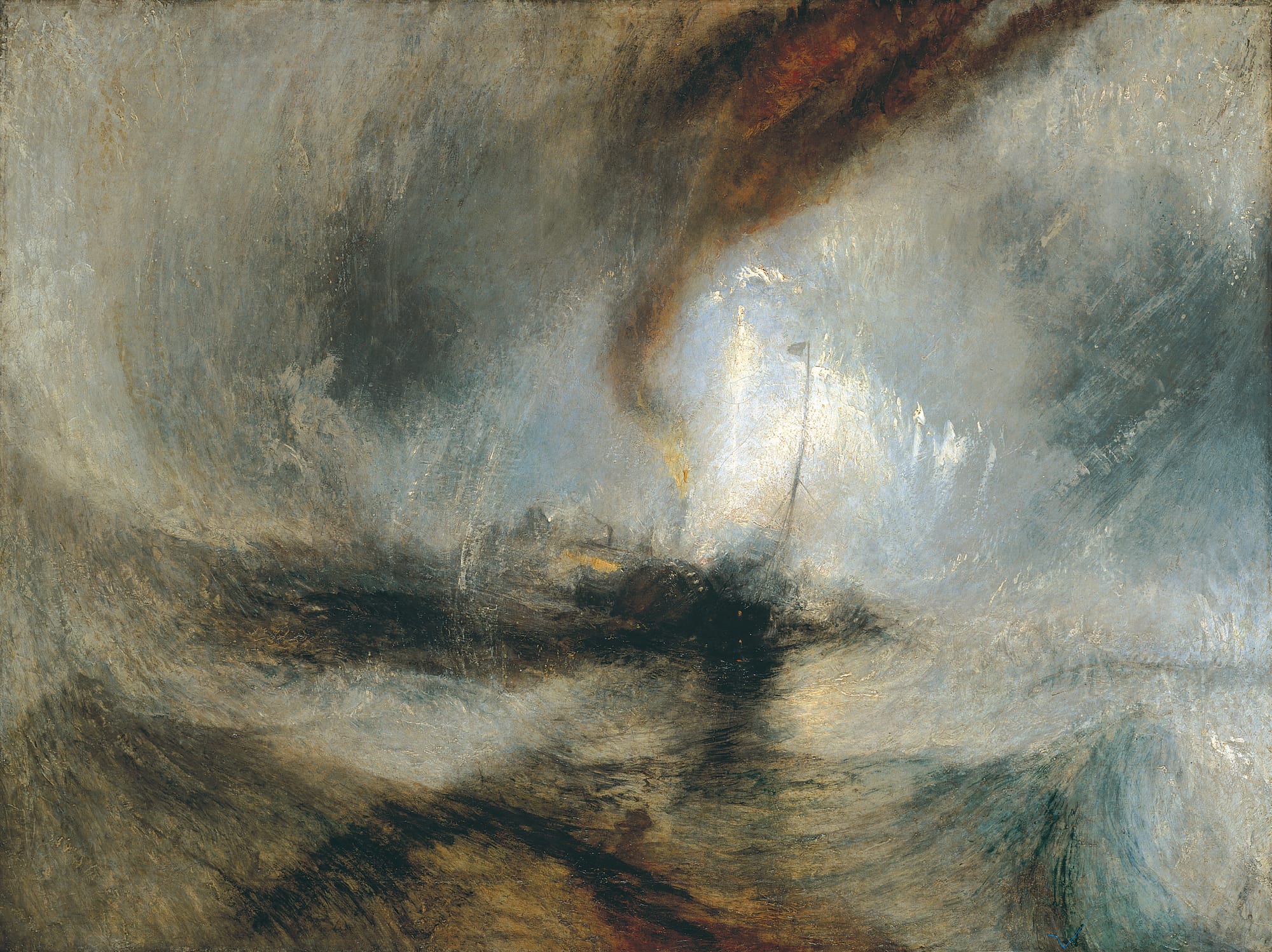

Snow Storm: Steam-Boat off a Harbour’s Mouth (1842) by J. M. W. Turner | Original Masterpiece & Envisioned 1980's New Romantic album cover by AI Slop.
In this coming Neo-Romantic period, the next great advantage will not belong to the fastest or the most automated. It will belong to those who can sustain meaning under pressure. Markets will keep moving on mood. Machines will keep imitating imagination. The real work will be remembering how to feel, how to focus, and how to think without assistance.
Designers will treat attention as a renewable resource. Marketers will compete on comprehension as much as reach. Engineers will rediscover ethics as a form of design constraint. The future will reward systems that know when to stop, when to breathe, and when to listen.
Romanticism raged against the machine by turning towards nature. Neo-Romanticism rages against the algorithm by turning towards emotion.
it is whether we can remain intelligent while they do.
🔮 Trends-005 | Neo-Romanticism
Friction: Automation has outpaced emotion. As AI expands into creativity and decision-making, human intelligence risks being flattened into output. The same systems that promised liberation now threaten to erase the feeling that made creation worth automating in the first place.
Reframe: A new Romantic impulse is emerging, one that treats emotion, context, and sensory experience as the last unreplicable forms of intelligence. The counter-movement to artificial reason is not fear; it is reflection. Feeling becomes the new frontier of understanding.
Critical Path: Build experiences that restore meaning to efficiency. Design technology that interprets rather than replaces. Treat attention, empathy, and context as renewable resources. The advantage ahead will belong to the teams that can scale output without stripping it of soul.
An Outtake
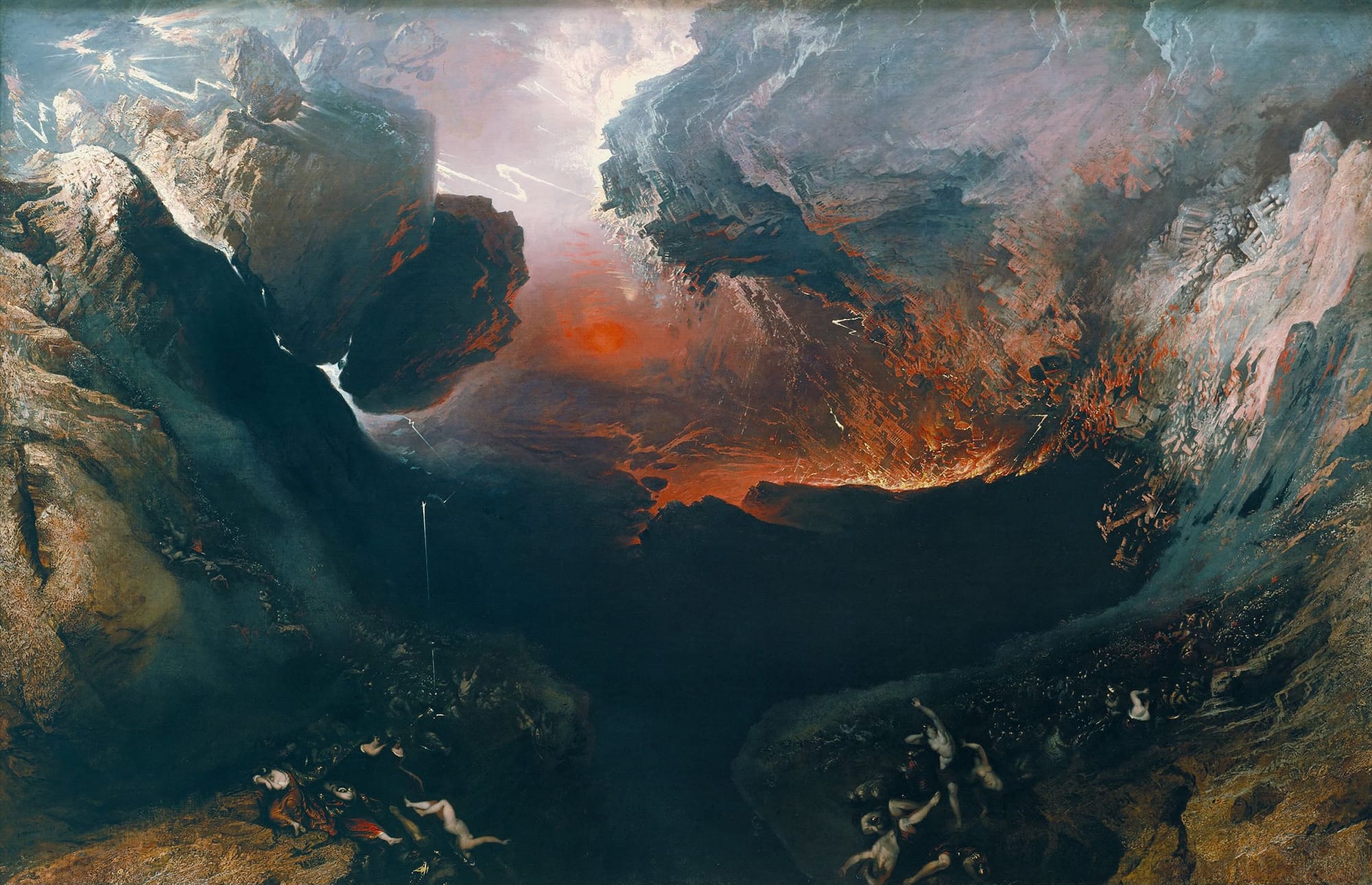
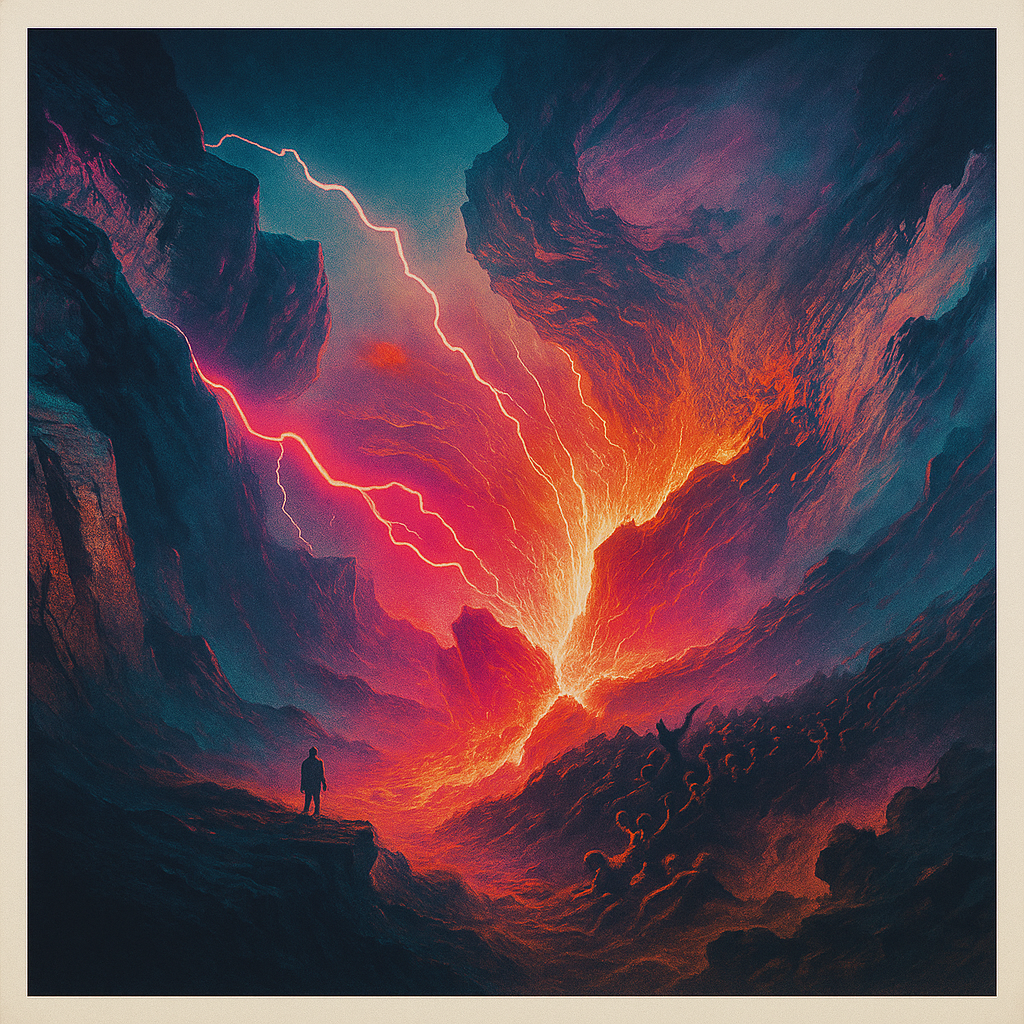
The Great Day of His Wrath (1851–53) by John Martin y J. M. W. Turner | Original Masterpiece & Envisioned 1980's New Romantic album cover by AI Slop.

